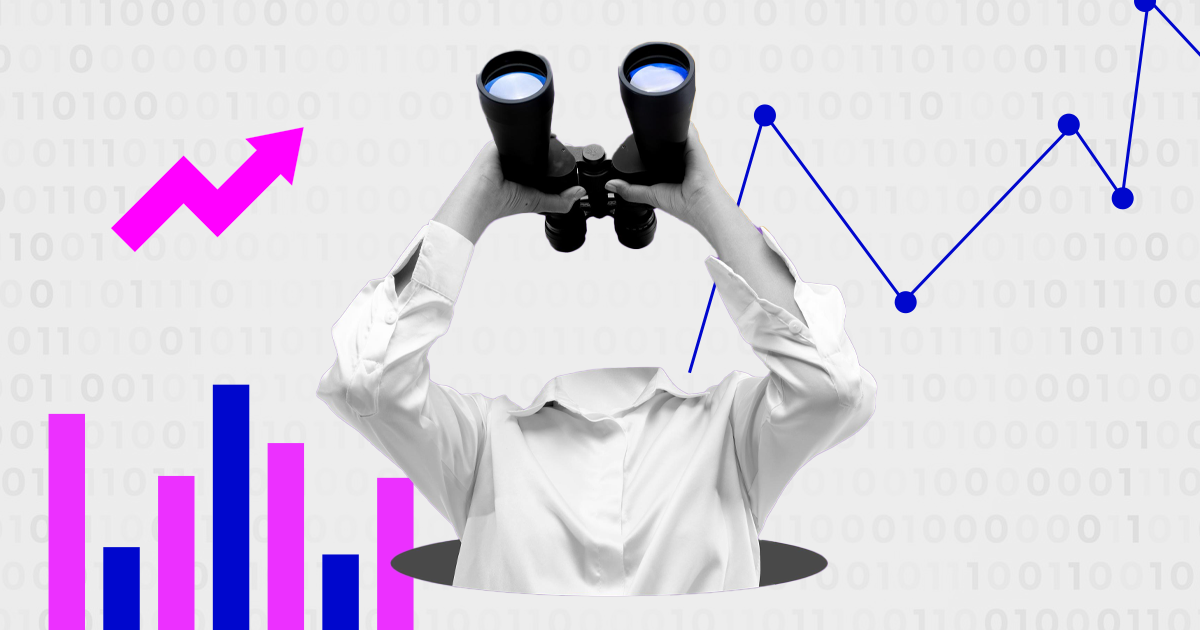Do you know what goes on in your customer’s mind during a buying journey? What are the triggers that lead to the fateful click of the “buy now” button? If you’ve spent more than 10 seconds thinking about it, this is for you. Let’s take a look at the fascinating (and sometimes enigmatic) world of online consumer behavior.
What is Consumer Behavior in the digital environment?
Basically, it’s how and why people browse, compare and purchase products or services on the internet. This digital journey is shaped by several factors, including emotions, social influences and, of course, good marketing strategies. But this behavior is not random – it follows patterns that we can (and should) study and understand.
1. The power of data
Before we dive into the behavioral nuances, let’s talk about the star of the show: data! Collecting, analyzing and interpreting behavioral data is like having a GPS to understand where your customers are going and where they want to go.

Essential tools:
- Google Analytics: Your data workshop. It shows you who, what, where, when and even why your customers are on your site.
- Heatmaps: Want to know where your users click or lose interest? Heatmaps are your X-ray lenses for layout optimization.
- CRM (Customer Relationship Management): Centralize all your customer information in one place. It’s like a diary, only much cooler.
2. Profiling: Get to know your customer
Segmentation is key. And we’re not just talking about age groups or gender. Get to know your customer’s interests, behaviors and even fears in depth. You need to do this in a way that even Sherlock Holmes would envy.
Persona and Customer Journey:
- Personas: Create fictional but realistic characters that represent your ideal consumers. Give them names, stories and desires.
- Customer Journey: Using tracking tags, map the steps consumers take from first contact with your brand to purchase and, ideally, loyalty.
3. Contextualize to Convert
Let’s talk about context. This is crucial. It’s no good just knowing who your consumer is, you need to know when and how they prefer to buy. By monitoring variables such as the season, seasonal events and even the time of day, you can adjust your strategy to hit the mark.
Practical examples:
- Seasonal Offers: Promotions in the fall for winter products? Yes, please!
- Campaign times: Depending on the type of service you offer, there are more strategic times to activate campaigns. For example, it may not be worth having a Google Ads ad for the word “pizza delivery” at times when your pizzeria is closed.
- Personalized Content by Region: What works for Marketing in Lisbon may not have the same effect in São Paulo.
4. Emotions: The Emptiness That Screams Shopping!
The decision to buy is often born in the heart before being authorized by the mind. Campaigns that generate emotions – be it humor, nostalgia or even a hint of fear of missing out on an offer ( the infamous FOMO – Fear Of Missing Out), tend to capture more attention and convert better.
Strategies:
- Storytelling: Tell an engaging story about your brand or product, people get involved with narratives that justify engagement.
- Social Proof: Testimonials, reviews and even partnerships with influencers can reinforce trust in your brand and validate its quality.
- Urgency and Scarcity: Use wisely! Limited-time promotions or low stock can give you that extra push.
5. Technology in Your Favor
Finally, we mustn’t forget the technological wonders at your disposal. Artificial Intelligence, Machine Learning and automation are more than just buzzwords; they are your tools for creating personalized and efficient experiences.
Examples of use:
- Chatbots: 24/7 customer service. Resolve queries and extend a helping hand at the right time, avoid losing opportunities because you don’t have a human team available 100% of the day and don’t lose any leads.
Click here and try Omni for free, a Chatbot platform ideal for increasing online sales.
- Personalized Recommendations: Algorithms that suggest products based on the user’s past behavior.
- Predictive Analysis: Use historical data to predict trends and adjust your strategy in real time.
Understanding online consumer behavior isn’t just about indiscriminate data collection or guessing trends. It’s a wonderful combination of science and art, data and emotions, technology and empathy, all within pre-established privacy rules and policies. And, of course, a good dose of creativity and fun! So, let’s go! Analyze, experiment, adjust and, above all, have fun on this journey.
We hope you enjoyed this blog post – half serious talk, half coffee with friends. See you next time! 🚀
Now, if your business needs to increase sales at a super high level, relying on an excellent marketing agency could be the right way to go – talk to one of our digital marketing experts now.



